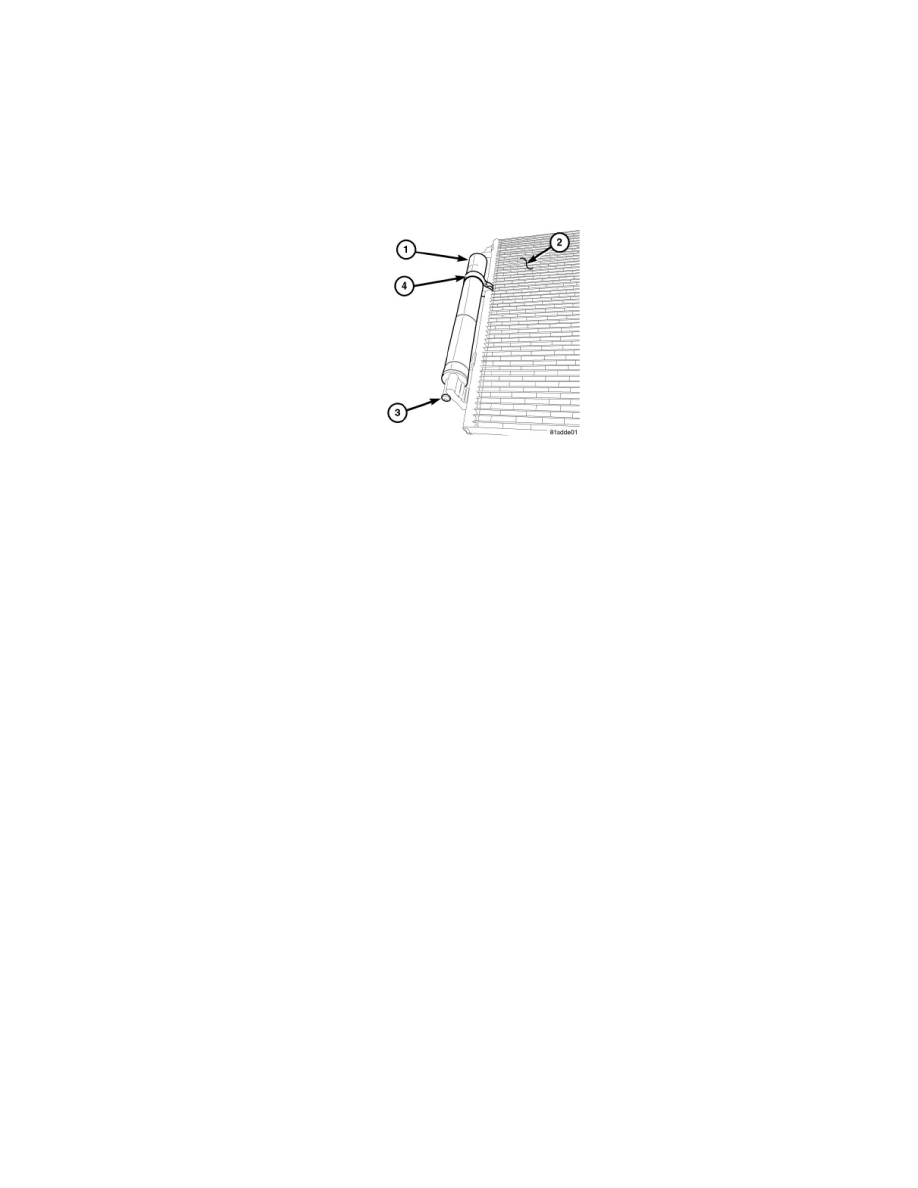Sprinter 2500 V6-3.0L DSL Turbo VIN 45 (2007)

Receiver Dryer: Service and Repair
Plumbing - Front
Removal
REMOVAL
WARNING: Review safety precautions and warnings before performing this procedure. Failure to follow the warnings and cautions may
result in serious or fatal injury.
1. Disconnect and isolate the negative battery cable.
2. Recover the refrigerant from the refrigerant system.
3. Remove the grille.
4. Remove the A/C condenser fan assembly from the front of the A/C condenser.
5. Remove the bolt (3) that secures the A/C receiver/drier (1) to the right end of the A/C condenser (2).
6. Disengage the receiver/drier mounting bracket (4) from the A/C condenser.
7. Disconnect the A/C receiver/drier from the A/C condenser and remove and discard the O-ring seals.
8. If required, remove the receiver/drier mounting bracket from the A/C receiver/drier.
9. Install plugs in, or tape over the opened receiver/drier and condenser ports.
Installation
INSTALLATION
CAUTION: Be certain to adjust the refrigerant oil level when servicing the A/C refrigerant system. Failure to properly adjust the refrigerant
oil level will prevent the A/C system from operating as designed and can cause serious A/C compressor damage.
CAUTION: The A/C receiver/drier must be replaced if an internal failure of the A/C compressor has occurred. Failure to replace the A/C
receiver/drier can cause serious A/C compressor damage.
NOTE: When replacing multiple A/C system components, refer to the Refrigerant Oil Capacities chart to determine how much oil should be added to
the refrigerant system.
NOTE: If only the A/C receiver/drier is being replaced, add 30 milliliters (1 fluid ounce) of refrigerant oil to the refrigerant system. Use only the
refrigerant oil of the type recommended for the A/C compressor in the vehicle.
NOTE: Replacement of the O-ring seals is required anytime the A/C receiver/drier is removed. Failure to replace the rubber O-ring seals may result in a
refrigerant system leak.
